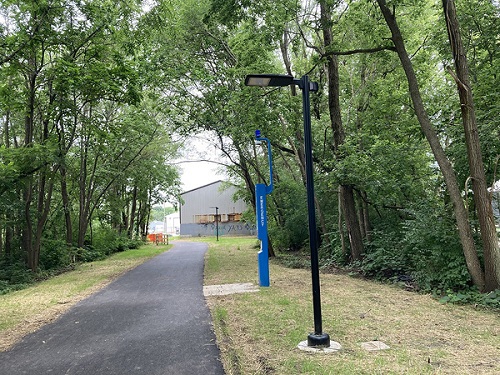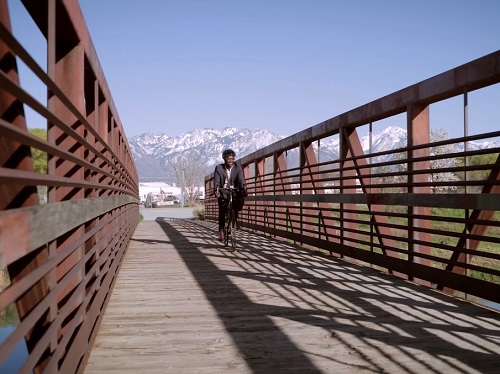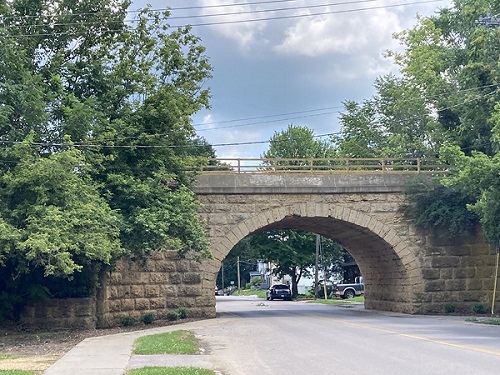The Illinois Department of Transportation recently outlined in a blog post how it helped transform an old railroad line and bridge in the city of Dixon, IL, into a trail for pedestrians, bicyclists, and other active transportation users.
[Above photo by the Illinois DOT]
The last train using the old Illinois Central Railroad line that once ran through the heart of Dixon rolled through the town in 1985. In 2016, the municipality began planning the conversion of that rail line into a multi-use trail with a combination of state and local funds as well as $3.4 million in federal funds disbursed by the Illinois DOT.

The initial phase of the project converted part of the line from Illinois DOT’s District 2 headquarters on Depot Avenue to Dixon’s downtown at Peoria Avenue and the Rock River. That initial $4.3 million project phase converted the rail line running over three stone arch bridges – listed on the National Register of Historic Places and rehabilitated in 1999 – to a lighted pedestrian and bicycle path that also features emergency call boxes for additional user safety. Approaching downtown, the trail leaves the rail line area via a graded wooden boardwalk designed to withstand the impact of Illinois winters.
The city also received $4 million in additional federal funding for remediation and environmental work at the old Dixon Iron and Metal Co., where the ramp from the old railroad connects with the riverfront trail at an area called Viaduct Point.
This project completes another phase of the Dixon Riverfront Masterplan, which had its conceptual beginnings more than 20 years ago, by helping complete Dixon’s Heritage Crossing Riverfront Plaza in which this path ties into.
The next phase of the project – called “Project Rock” and made possible through a $12 million federal Rebuilding American Infrastructure with Sustainability and Equity or “RAISE” grant – should start this fall and will extend the trail across the Rock River into Page Park. The city’s leadership also hopes the trail could eventually extend to the south end where it can connect with future parkland and Dixon’s gateway shopping area.
Other state departments of transportation are helping with similar locally-driven active transportation projects around the country.

For example, in May, the Utah Department of Transportation recently issued nearly $95 million to support 19 trail projects – including the construction of new paved trails as well as funding for planning efforts to fill in existing trail gaps – as part of creating a regional “Utah Trail Network” across the state.
The agency said that it collaborated with communities statewide regarding the allocation of that funding – approved by the Utah Transportation Commission – to select the key projects for this statewide trail network.
Of the projects selected for that inaugural round of funding, Utah DOT said 13 are considered construction ready and could get underway as soon as 2025 – depending on contractor schedules, supply availability and other factors like weather.
Additionally, in 2023, the Rhode Island Department of Transportation helped support – in concert with various federal, state, and local agencies – the new “Gotham Greens” off-road multi-use path along the Woonasquatucket River Greenway via stormwater mitigation efforts.
This new path, located behind the Gotham Greens building in Olneyville, offers new access to the Woonasquatucket River and serves as a connector between the Greenway and the Washington Secondary Bike Path – helping “knit together” a “patchwork of pathways” in the City of Providence to promote active transportation use while protecting the local environment from stormwater flooding.

